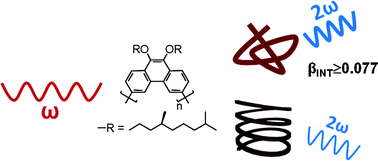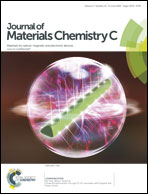Record-high hyperpolarizabilities in conjugated polymers†
Abstract
Disubstituted poly(phenanthrene), a conjugated polymer, has been studied by hyper-Rayleigh scattering. Although this compound lacks the donor–acceptor motif that is typically associated with a strong second-order nonlinear optical response, the (intrinsic) hyperpolarizability ranks among the highest ever measured, breaking the longstanding apparent limit. The linear and nonlinear optical properties of the polymer depend strongly on the solvent conditions, affecting the macromolecular organization. An explanation for these unexpected results is postulated and is based on modulation of conjugation along the polymer backbone. As the molecular structure of the compound does not at all fit into the classical paradigms, our observations put these theories into perspective.


 Please wait while we load your content...
Please wait while we load your content...